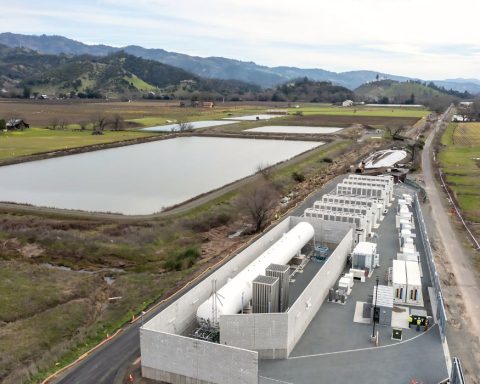Talk to anyone involved with electric vehicles (EVs) and odds are they’ll mention “chicken and egg.” It’s a modern take on the “which comes first?” puzzler: Without public charging stations, people won’t buy EVs, but why build infrastructure when so few are buying the vehicles?
So far, it’s governments that have made the biggest effort to solve the riddle, subsidizing charging stations as they have EVs. That, in turn, could transform the production and operation of stations into a profitable business.
In the largest contribution to date, the U.S. government gave a total of $152 million to the country’s two main industry players – ChargePoint, a division of California-based manufacturer Coulomb Technologies, and ECOtality, which runs the Blink network.
They’ve partially succeeded. As with EVs, station sales are expanding at an impressive rate and installation announcements are commonplace. But absolute numbers remain small, governments still dispense generous support, and charging is free at three-quarters of the sites.
“The private sector is starting to move on its own,” says Scott Miller, eastern U.S. vice-president at ChargePoint, which has installed nearly 11,000 stations, mainly in the United States. “About half our stations are installed by people saying they want to be ahead of the curve.”
But while Miller says government support is diminishing and the industry “would now survive without it,” it still benefits from policies such as federal tax credits of up to $30,000 for each commercial installation and $1,000 for personal use.
California, with half of America’s EVs, leads North America in charging infrastructure.
The majority of U.S. stations are at the homes of the 50,000 drivers who’ve bought all-battery or plug-in hybrid EVs. According to California-based analysts Frost & Sullivan, most rely on their standard 120-volt, or Level 1, household service for recharging. Some – Nissan says 90 per cent of its Leaf drivers – purchase Level 2 (240-volt) models, which cut recharging times by half or more.
Another 2,000 stations, most Level 2, are at workplaces – for corporate or government fleets, or employees. Google has 300 at its California headquarters.
Finally, there are 8,000 publicly accessible Level 2 stations, and another 200 Level 3 fast-chargers, which require 480 volts and fill batteries to 80 per cent of capacity in 30 minutes. In its own category, Tesla Motors is installing proprietary Superchargers, initially in California and the Northeast, to let its drivers tackle highway trips.
Canadians have purchased just 2,500 plug-in cars, and, with minimal government support, charging has developed on an equally tiny scale.
British Columbia leads: With $2.74 million from the federal government, it subsidized 570 Level 2 stations, for fleet or public use, to be installed by this spring. Quebec’s provincially owned utility, Hydro-Quebec, supports the Electric Circuit, now with about 150 public stations. Privately owned Sun Country Highway, backed by its owner’s personal wealth, has installed 200 Level 2 stations across Canada, most in Ontario, and aims for 1,000 within 18 months, says spokesperson Stephen Bieda.
Elsewhere, local governments, utilities and retailers have installed one or two, here and there.
Across North America, some home stations and virtually all workplace and public locations are provided by companies – dominated by ChargePoint, ECOtality and Texas-based NRG Energy – that sell or lease the devices and tie them into increasingly sophisticated computer networks that manage billing and security. They also provide services such as informing drivers where stations are located and whether they’re in use.
Recent developments suggest the industry might be at a tipping point, particularly with costs falling.
• A federal “Workplace Charging Challenge” aims for a 10-fold increase in stations provided by U.S. employers within five years. Thirteen major corporations signed on.
• Nissan is working with partners such as NRG to triple U.S. fast-chargers, including 40 in Washington, D.C.
• New York Mayor Michael Bloomberg proposes that one-fifth of parking spots in new buildings have charging stations, boosting the city’s total to 10,000, from 220, by 2019.
• ECOtality and retailer Sears have installed 12 Level 2 and five fast-charging stations at Tennessee and Arizona stores.
• Canada’s iconic Tim Hortons coffee chain plans to install a station at a suburban store near Toronto and says the service might expand to more of its 3,300 restaurants.
• The Simon Property Group, the world’s largest real-estate company, has teamed with the top U.S. electric power company, Duke Energy, as well as Toshiba and other corporations to install a solar-powered charging site with Level 2 and Level 3 stations at a Carmel, Indiana, mall – part of a statewide clean-tech initiative with federal backing.
Employers can justify the expense as a means to polish corporate green credentials and boost employee morale. But the rationale remains less obvious for retailers: With so few EVs on the road, charging done mainly at home or workplaces, and most trips limited to urban areas, distances are too short and charging too slow to attract business.
Some suggest stations are just a psychological crutch; “a service to avoid range anxiety,” says Nicholas Bowmany of Montreal-based GridBOT, which manufactures stations. “It’s only to appease their minds.”
The industry is expected to grow. The number of U.S. public stations should swell to 30,000 within two years, says Brendan Jones, director of EV marketing and infrastructure development with Nissan. The Washington-based Electric Drive Transportation Association predicts 1.7 million by 2017. Frost & Sullivan forecasts 4.1 million U.S. charging points, of all types, the same year.
Notwithstanding that rosy forecast, industry observers expect a shakeout as manufacturers and network operators await the critical mass that will eliminate the chicken-and-egg conundrum.







